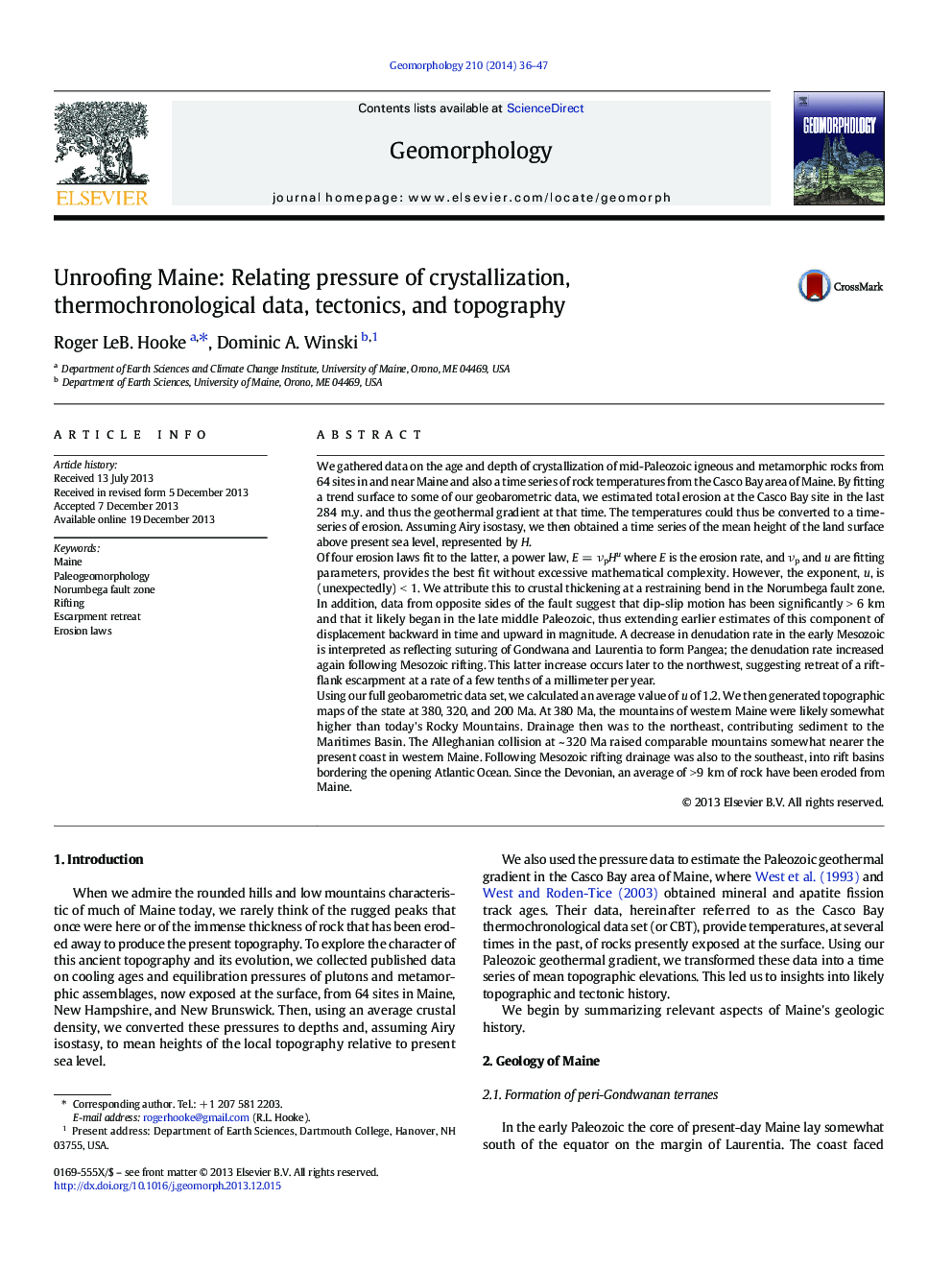| Article ID | Journal | Published Year | Pages | File Type |
|---|---|---|---|---|
| 4684591 | Geomorphology | 2014 | 12 Pages |
We gathered data on the age and depth of crystallization of mid-Paleozoic igneous and metamorphic rocks from 64 sites in and near Maine and also a time series of rock temperatures from the Casco Bay area of Maine. By fitting a trend surface to some of our geobarometric data, we estimated total erosion at the Casco Bay site in the last 284 m.y. and thus the geothermal gradient at that time. The temperatures could thus be converted to a time-series of erosion. Assuming Airy isostasy, we then obtained a time series of the mean height of the land surface above present sea level, represented by H.Of four erosion laws fit to the latter, a power law, E = νpHu where E is the erosion rate, and νp and u are fitting parameters, provides the best fit without excessive mathematical complexity. However, the exponent, u, is (unexpectedly) < 1. We attribute this to crustal thickening at a restraining bend in the Norumbega fault zone. In addition, data from opposite sides of the fault suggest that dip-slip motion has been significantly > 6 km and that it likely began in the late middle Paleozoic, thus extending earlier estimates of this component of displacement backward in time and upward in magnitude. A decrease in denudation rate in the early Mesozoic is interpreted as reflecting suturing of Gondwana and Laurentia to form Pangea; the denudation rate increased again following Mesozoic rifting. This latter increase occurs later to the northwest, suggesting retreat of a rift-flank escarpment at a rate of a few tenths of a millimeter per year.Using our full geobarometric data set, we calculated an average value of u of 1.2. We then generated topographic maps of the state at 380, 320, and 200 Ma. At 380 Ma, the mountains of western Maine were likely somewhat higher than today's Rocky Mountains. Drainage then was to the northeast, contributing sediment to the Maritimes Basin. The Alleghanian collision at ~ 320 Ma raised comparable mountains somewhat nearer the present coast in western Maine. Following Mesozoic rifting drainage was also to the southeast, into rift basins bordering the opening Atlantic Ocean. Since the Devonian, an average of > 9 km of rock have been eroded from Maine.
